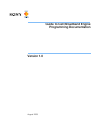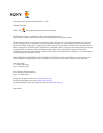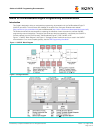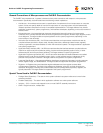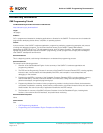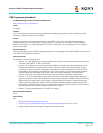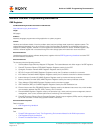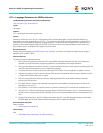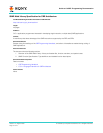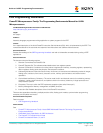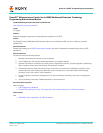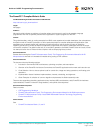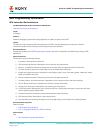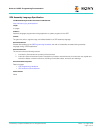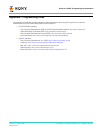
Guide to Cell/B.E. Programming Documentation
© 2008 Sony Computer Entertainment Inc. All Rights Reserved. Version 1.0, August 2008
Page 5 of 16
General Conventions of Microprocessor and Cell/B.E. Documentation
The Cell/B.E. documentation set, in general, observes industry-wide conventions with respect to microprocessor
documentation. Specifically, document titles have the following content implications:
Architecture – An architecture document is a specification of requirements for a microprocessor or computer
system. It does not specify details of how the microprocessor or computer system must be implemented;
instead it provides a template for a family of compatible implementations. The target audience may include
application programmers, system programmers, and hardware developers, depending on the actual content of
the document.
Microarchitecture—A microarchitecture document describes the internal functions of microprocessor
hardware, and it normally illustrates these functions as general block diagrams, Boolean-logic diagrams, and/or
circuit diagrams. The target audience may be application and/or system programmers, depending on the
actual content of the document.
Instruction Set Architecture (ISA) – An ISA document describes a microprocessor model that is seen by
compiled software (machine or object code), including instructions, address and data formats, registers,
memory organization, and state variables on which the instructions operate. The target audience is application
and system programmers.
Application Binary Interface (ABI) – An ABI document describes the interface between compiled software
(machine or object code) and a particular pairing of system software (operating system, library, or other
software service) and microprocessor hardware. The target audience is system programmers.
Application Programming Interface (API) – An API document describes the interface between uncompiled
software (source code) and an operating system, library, or other software service, independent of any
particular microprocessor hardware. The target audience is application and system programmers.
Language Specification – A language specification describes a programming language, including grammar,
lexicon, register usage, and related details. The target audience is application and system programmers.
Registers – A Registers document describes register addresses and how register contents affect
microprocessor operations. The fields of the registers are illustrated, bit-by-bit, and their functions are
described. All registers, including both problem-state (user) and privilege-state (supervisor) registers, are
typically described. The target audience is application and system programmers.
Special Terms Used in Cell/B.E. Documentation
Privilege State (Supervisor) – The state in which system software has system-wide control over all other
software processes.
Problem State (User) – The state in which application software runs under system software.
Intrinsics – C/C++ function calls mapped to one or more Cell/B.E. assembly instructions.
SIMD – Single-instruction, multiple-data.



